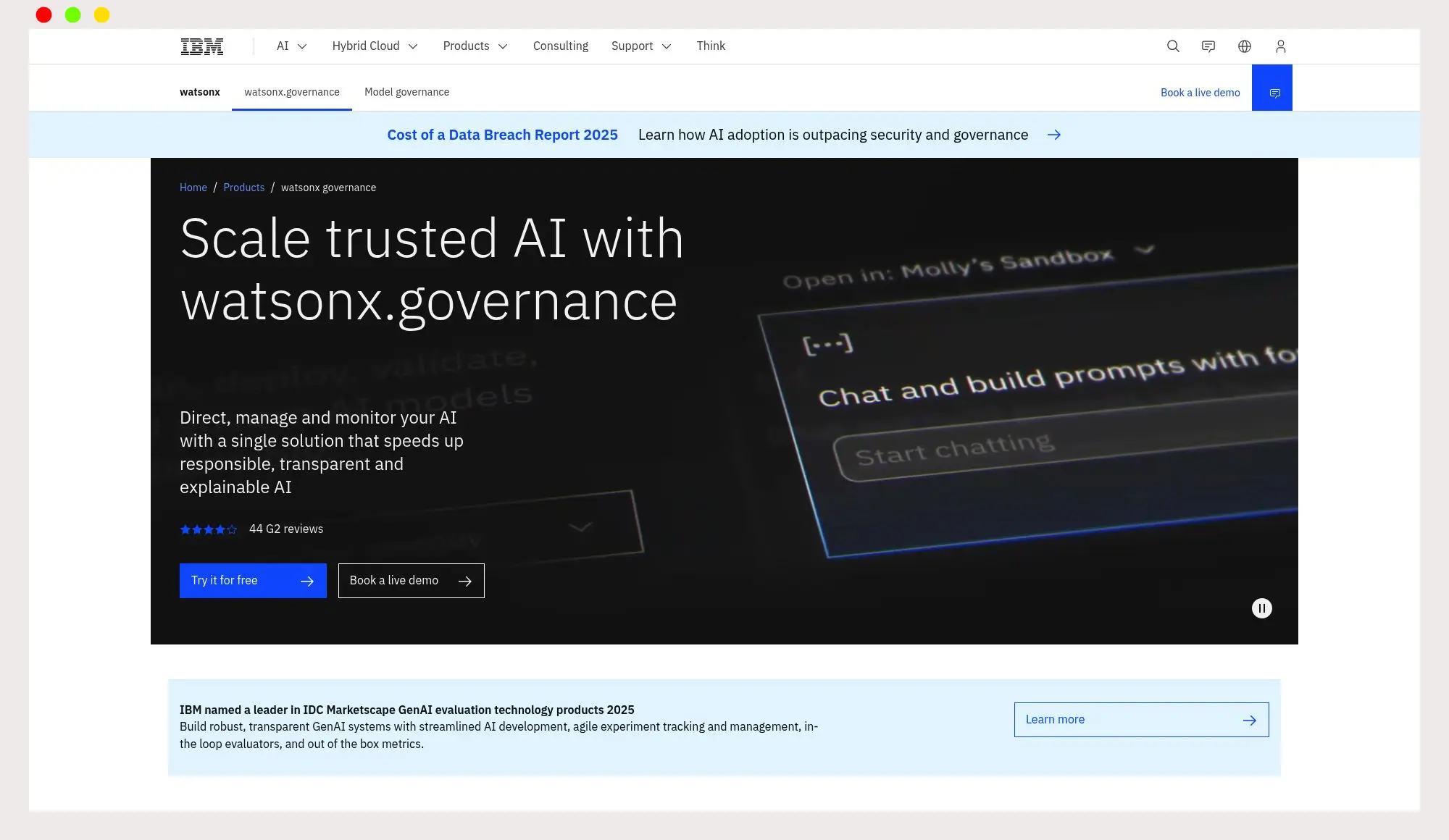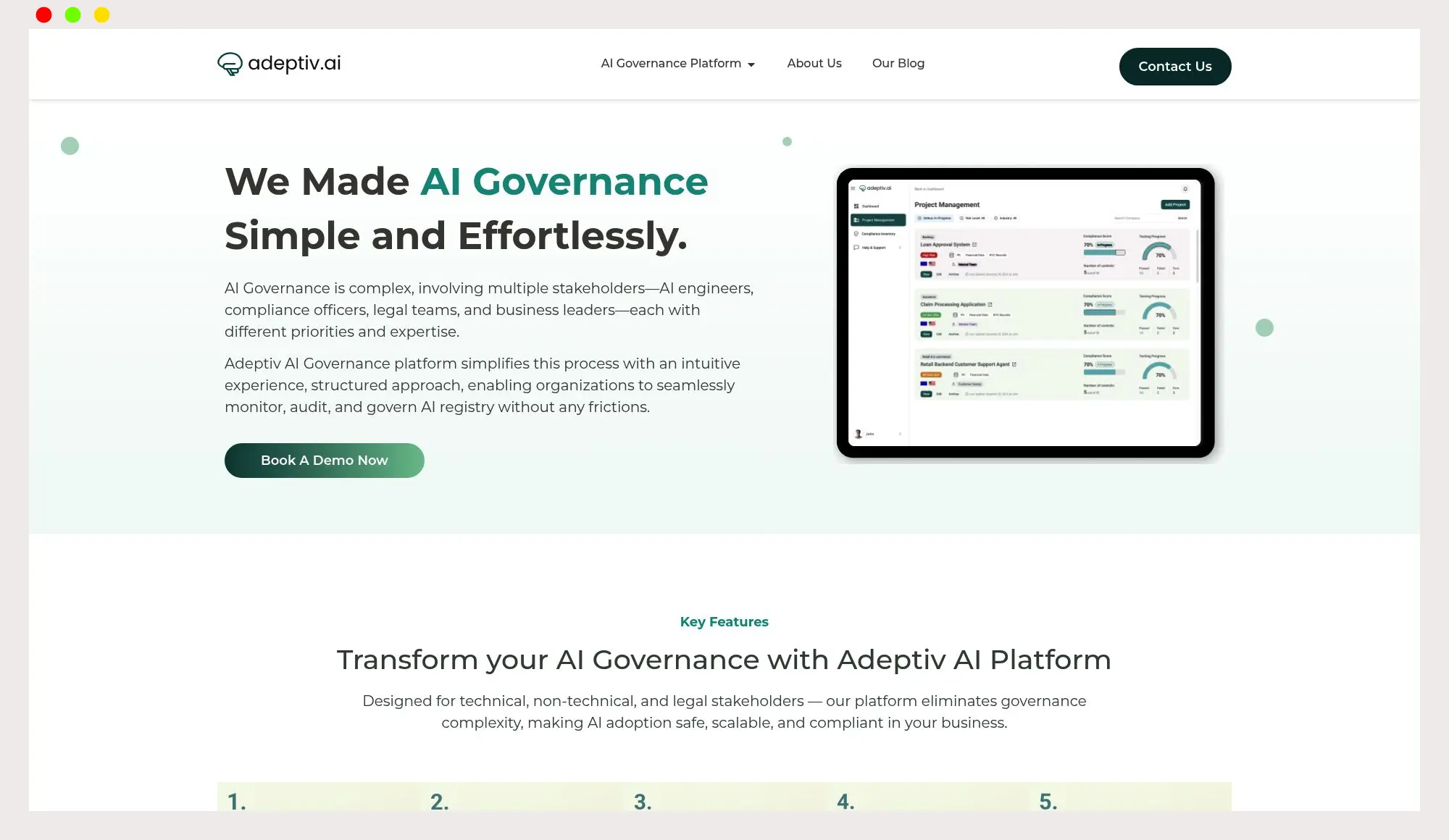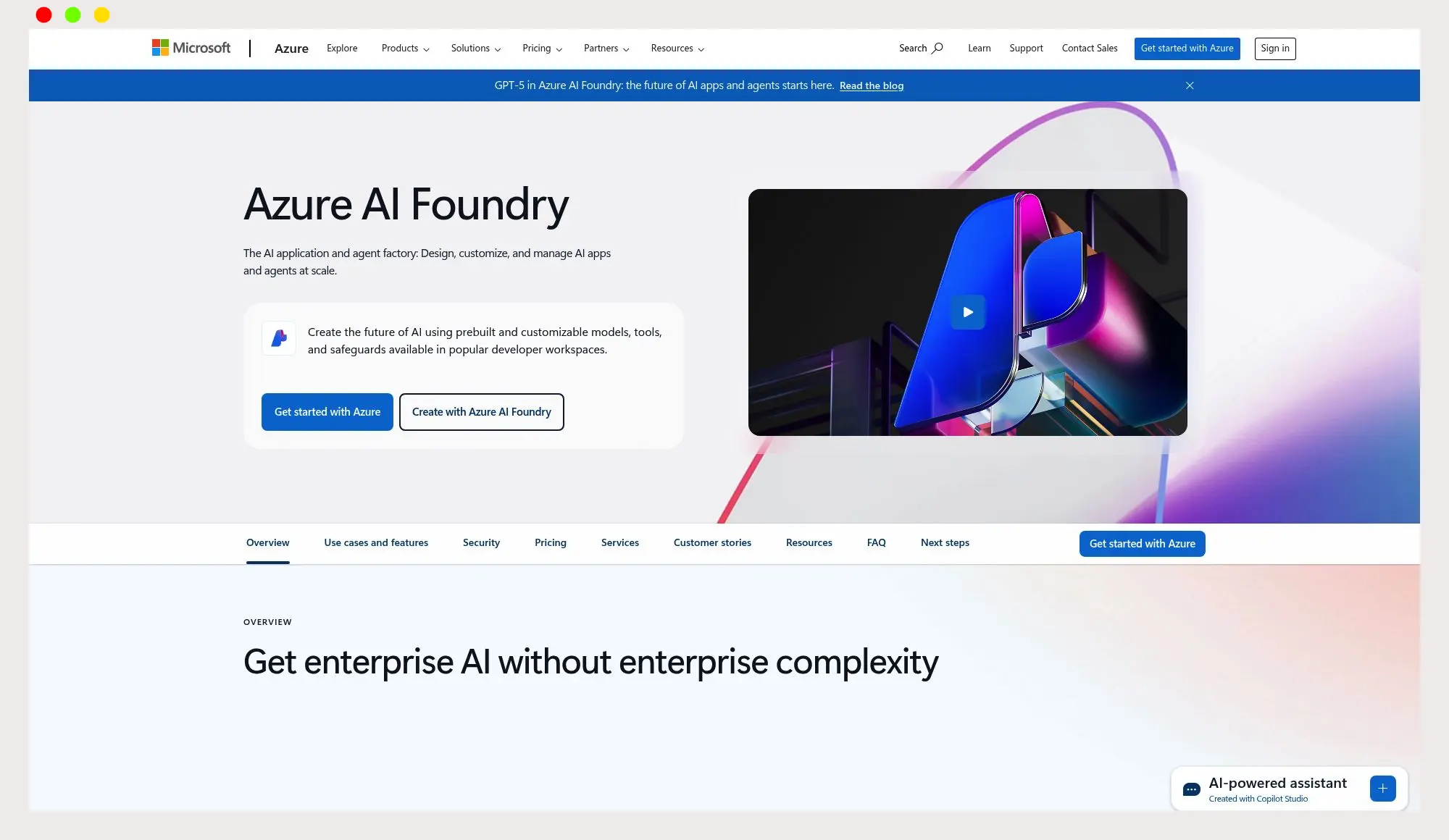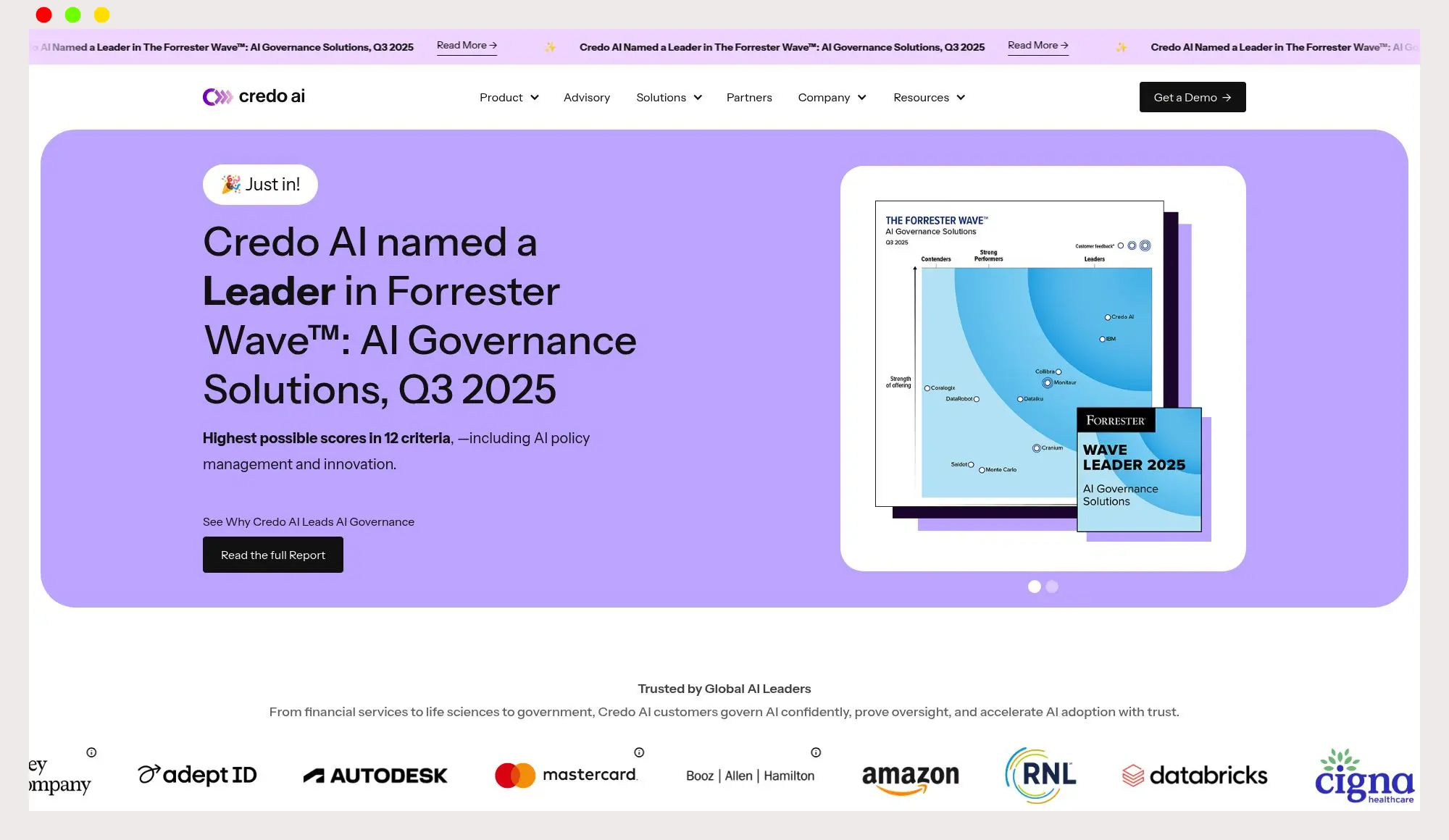Most teams discover their AI agents are acting outside policy during incident response, not from scheduled audits. Working across different tech companies, I have learned that the biggest governance mistakes happen when prompt chains hit production without human-in‑the‑loop approvals, when agent tools are added with no RBAC boundaries, and when evaluation traces are missing for post‑mortems. From my experience in the startup ecosystem, three technical must‑haves are evaluation pipelines with faithfulness checks, end‑to‑end trace logging for agents, and role scoped secrets for tool use. A recent Gartner poll found 55 percent of organizations already have an AI board, yet many agent projects still fail to show value, a warning echoed by Gartner research covered by Reuters. This is where governance platforms pay off.
You will learn where each is strongest, what to watch out for, and how to map them to NIST AI RMF and ISO 42001 requirements, backed by credible sources like Gartner and Reuters.
watsonx.governance

Enterprise AI governance software with model and agent lifecycle oversight. Designed to centralize policies, evaluations, and audit evidence across hybrid and multi‑cloud environments.
Best for: Large enterprises that need model and agent governance tied to risk workflows across clouds and regulated workloads.
Key Features:
- Lifecycle governance with inventories, factsheets, and dashboards, plus evaluation metrics for fairness, drift, and LLM quality, per vendor documentation.
- Compliance accelerators that map global regulations and standards into assessable controls, per vendor documentation.
- Integrations with security tooling for unified AI risk posture across data, models, and usage, reported in industry press coverage about IBM’s governance and AI security alignment.
- Hybrid deployment options, including software for customer managed environments and SaaS via marketplaces, validated by the UK government cloud marketplace listing and AWS Marketplace.
Why we like it: It is one of the few platforms that treats agent evaluation as a first‑class workflow and can be deployed where data placement constraints matter.
Notable Limitations:
- Users on third‑party review sites cite a steep learning curve and complex setup, and mention occasional latency and connector gaps, as seen on G2.
- Pricing and tiers vary by contract and channel, which can complicate budgeting, as seen across public marketplace listings such as the AWS Marketplace entry and the UK’s Digital Marketplace listing.
Pricing: Examples vary widely by edition and region. A 12‑month “starting configuration” shows at $441,600 on AWS Marketplace. The UK Government Digital Marketplace lists an instance at £62,604 per year. For enterprise software deployments and consumption rates, contact IBM for a custom quote. Pricing may differ by country and contract.
Adeptiv AI Governance

Streamlined governance with dashboards, AI powered risk and compliance assessments, audit logs, and role‑based access across AI projects.
Best for: Teams that want fast onboarding, policy mapping to popular frameworks, and audit readiness with minimal setup.
Key Features:
- Prebuilt templates for project onboarding, continuous compliance tracking, and automated documentation, per vendor documentation.
- Role‑based access control with real time audit logs for approvals and changes, per vendor documentation.
- Inventory and registry to track AI use cases, risks, and evidence, per vendor documentation.
Why we like it: It aims to cut the spreadsheet overhead for registries, controls, and audit artifacts while keeping role clarity clear for CAIO, legal, and engineering stakeholders.
Notable Limitations:
- Limited independent reviews and third‑party benchmarks as of September 2025. Treat as an emerging vendor and pilot first.
- Pricing is not public, which makes early budgeting harder without a sales conversation.
Pricing: Pricing not publicly available. Contact Adeptiv for a custom quote.
Azure AI Foundry

A unified Azure platform to design, customize, deploy, and manage AI apps and agents at scale, with observability, safety controls, and enterprise integrations.
Strictly no links here per instructions.
Best for: Microsoft‑centric enterprises that need agent tooling, content filtering controls, and centralized billing with Azure services.
Key Features:
- Platform experience for building agents with tracing and evaluation hooks, plus events and workflow triggers, per Microsoft documentation and recent platform updates.
- Safety focus moving beyond quality and cost, with Microsoft introducing a model “safety” ranking for cloud customers, as reported by the Financial Times.
- Consolidated marketplace and compliance review signals for enterprise apps and agents, covered by Reuters.
Why we like it: Strong for organizations already on Azure that want agent services plus governance guardrails tied to corporate identity, network, and billing.
Notable Limitations:
- Community feedback points to stricter content filters and occasional latency versus alternatives, and filter relaxation often requires approvals, as outlined in Microsoft Learn and user reports on Reddit discussions such as this content filters guide.
- Model availability and region constraints may lag the very latest releases, per user reviews on G2.
Pricing: The platform is free to explore, services are billed per use. See Microsoft’s pricing page for Azure AI Foundry components and model billing on the official Azure pricing portal.
Credo AI

Enterprise AI governance platform providing oversight across the AI lifecycle, with policy management, risk and compliance automation, and executive dashboards.
Strictly no links here per instructions.
Best for: Enterprises standardizing on NIST AI RMF, ISO 42001, and EU AI Act profiles that want centralized policy packs and audit artifacts.
Key Features:
- Policy packs to encode regulations and standards into assessable controls with governance artifacts, per vendor documentation.
- Cross‑functional workflows for legal, risk, and engineering with dashboards and generated reports for audits, per vendor documentation.
- Deployment flexibility, including self hosted and air gapped options for sensitive environments, per vendor documentation.
Why we like it: Clear focus on governance program maturity, with strong policy, evidence, and reporting mechanics that map well to enterprise audit needs.
Notable Limitations:
- Pricing is not public, and independent side‑by‑side benchmarks are limited.
- As with any governance platform, you will still need process changes and control owners to realize value, which some teams underestimate.
Pricing: Pricing not publicly available. The company’s growth and market traction are documented in a 2024 funding update on Business Wire. Contact Credo AI for a custom quote.
Agentic AI Governance Tools Comparison: Quick Overview
| Tool | Best For | Pricing Model | Free Option | Highlights |
|---|---|---|---|---|
| watsonx.governance | Regulated enterprises with hybrid or multi‑cloud | Contract or marketplace, examples publicly listed | Trial availability varies by channel | Compliance accelerators, lifecycle evaluations, hybrid deployment, with public listings on AWS Marketplace and the UK Digital Marketplace |
| Adeptiv AI Governance | Fast onboarding for registries, controls, and audits | Custom quote | Not stated | Templates, RBAC, audit logs, auto mapped frameworks, per vendor documentation |
| Azure AI Foundry | Azure first organizations building agents and apps | Usage based, per Azure billing | Free to explore | Model safety ranking initiative and enterprise review pipeline reported by the Financial Times and Reuters |
| Credo AI | Enterprises standardizing governance programs | Custom quote | Not stated | Policy packs, audit artifacts, deployment flexibility, with recent funding coverage on Business Wire |
Agentic AI Governance Platform Comparison: Key Features at a Glance
| Tool | Policy Packs or Compliance Mapping | Agent or LLM Evaluations | Dashboards and Audit Artifacts |
|---|---|---|---|
| watsonx.governance | Yes, compliance accelerators per vendor documentation | Yes, fairness, drift, LLM quality per vendor documentation | Yes, inventories, factsheets, reports per marketplace listings referenced above |
| Adeptiv AI Governance | Yes, 30 plus frameworks per vendor documentation | Yes, AI powered risk and controls per vendor documentation | Yes, audit logs and reports per vendor documentation |
| Azure AI Foundry | Content filters and safety reviews, model “safety” ranking underway per the Financial Times | Agent tracing and evaluation hooks per Microsoft documentation | Yes, platform dashboards and traces per Microsoft documentation |
| Credo AI | Yes, policy packs aligned to NIST AI RMF and ISO 42001, per vendor documentation | Yes, quality and testing workflows per vendor documentation | Yes, automated governance reports, per vendor documentation |
Agentic AI Governance Deployment Options
| Tool | Cloud API | On‑Premise | Air‑Gapped | Integration Complexity |
|---|---|---|---|---|
| watsonx.governance | Yes | Yes, software deployment | Possible in customer managed environments | Medium to High, per enterprise reviews on G2 |
| Adeptiv AI Governance | Yes | Yes | Not publicly verified, treat as vendor claim | Medium, depends on registry and control mappings |
| Azure AI Foundry | Yes | No | No | Medium, strongest for Azure‑native stacks, usage based pricing on the Azure portal |
| Credo AI | Yes | Yes | Yes | Medium, aligns to governance process maturity, funding traction on Business Wire |
Agentic AI Governance Strategic Decision Framework
| Critical Question | Why It Matters | What to Evaluate | Red Flags |
|---|---|---|---|
| Can you evidence NIST AI RMF governance, map, measure, manage functions? | Many U.S. programs reference NIST AI RMF 1.0 and GenAI Profile | Built‑in mappings and exportable artifacts aligned to NIST AI RMF 1.0 and the GenAI Profile | Manual spreadsheets, no traceability, no control owners |
| Do agent safety and model evaluations cover faithfulness, harmful content, and tool misuse? | Gartner expects many agent projects to be scrapped without clear value and controls | Evaluation pipelines, red teaming, content filters, model safety ranks like Microsoft’s initiative reported by the Financial Times | No evaluation history, no guardrails on tool use |
| Can you support ISO/IEC 42001 audits? | ISO 42001 is the first AI management system standard | Policy mapping and evidence to ISO/IEC 42001:2023 | Lack of responsibility assignments and audit trails |
| How will you prove executive oversight? | 55 percent of organizations now have an AI board | Board ready reports and program metrics, as highlighted by Gartner | No board visibility, no KPIs |
Agentic AI Governance Solutions Comparison: Pricing and Capabilities Overview
| Organization Size | Recommended Setup | Monthly Cost | Annual Investment |
|---|---|---|---|
| Startup to Mid‑Market | Adeptiv AI Governance or Credo AI pilot focused on NIST AI RMF inventory and policy packs | Varies, pricing not publicly available | Varies, request quotes |
| Enterprise, Azure‑centric | Azure AI Foundry for agents, with content filtering and evaluation traces, plus policy overlays | Usage based per Azure pricing | Usage based per Azure pricing |
| Highly regulated, hybrid | watsonx.governance software plus marketplace options for scale and hybrid control | From public examples, contracts can exceed hundreds of thousands annually, see AWS Marketplace | Example listings show $441,600 for 12 months on AWS Marketplace, real pricing varies by contract |
Problems & Solutions Section
-
Problem: “We must operationalize NIST AI RMF and generate audit evidence.”
- Solution with watsonx.governance: Use lifecycle inventories and factsheets to produce artifacts mapped to controls, then export evidence for audits. This aligns with the RMF’s govern, map, measure, manage functions described by NIST and the GenAI profile for LLM risks (NIST profile).
- Solution with Credo AI: Policy packs codify regulations and standards into checkable controls, generating model cards and reports suitable for auditors, consistent with the RMF’s evidence centric approach described by NIST.
-
Problem: “Our new AI agent calls tools autonomously, and we need safety scoring to choose models and document guardrails.”
- Solution with Azure AI Foundry: Build agents with traceability and associate deployments with content filters, then compare models including safety signals, a capability Microsoft is bringing to its leaderboard as reported by the Financial Times.
- Solution with watsonx.governance: Incorporate evaluation nodes for faithfulness and answer relevance into agent workflows and track results in dashboards, then integrate findings into risk registers, matching the need to avoid “agent washing” noted in Gartner coverage by Reuters.
-
Problem: “We need an AI governance board with program KPIs and board‑ready reporting.”
- Solution with Credo AI: Executive dashboards and generated governance reports give boards line‑of‑sight into adoption, risk, and compliance status, useful given that 55 percent of organizations now have AI boards per Gartner.
- Solution with Adeptiv AI Governance: Control level tracking with immutable audit logs produces quick evidence for board and regulator requests, per vendor documentation.
-
Problem: “We operate in ISO 42001 oriented environments and must standardize processes.”
- Solution with any featured tool: Map program controls to ISO/IEC 42001:2023 and NIST AI RMF crosswalks. Credo AI and Adeptiv emphasize policy packs and control evidence, while watsonx.governance and Azure AI Foundry contribute evaluation and trace data to those packs, supporting audits.
The Bottom Line on Agentic AI Governance
Agent projects will only scale if you can prove safety, trace decisions, and show measurable value. The data points are clear, Gartner sees more AI boards forming and also warns that many agent initiatives will be culled without controls and ROI, both covered in Gartner’s newsroom and Reuters. If you are Azure‑first, Azure AI Foundry gives you agent building blocks plus safety signals. If you need deep policy automation and audit evidence, Credo AI or Adeptiv can standardize your governance program. If you require hybrid deployment with heavy risk workflows, watsonx.governance is strong. Start by aligning to NIST AI RMF 1.0 and ISO/IEC 42001, then choose the platform that best fills your gaps in evaluation, evidence, and executive oversight.


